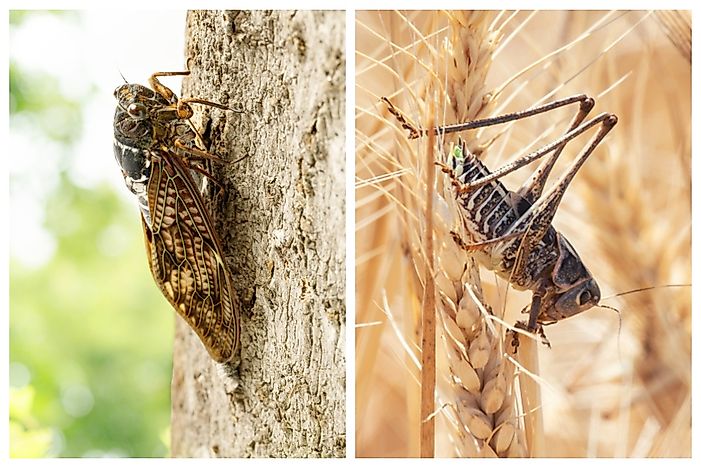
:no_upscale()/cdn.vox-cdn.com/uploads/chorus_asset/file/6357349/activebroods.jpg)
In North America, the words locust and grasshopper are often used interchangeably, with locust less commonly applied to cicadas. Sometimes, it refers to smaller grasshoppers. The term is used differently in different places. Kenya On High Alert As Fresh Wave of Locust Invasion Looms #Kenya /WKh6oZjm1YĪ locust is “any of several grasshoppers of the family Acrididae, having short antennae and commonly migrating in swarms that strip the vegetation from large areas.” Their life cycle ends when the insects die just about four to six weeks after emerging.Ĭrawl deeper into the meanings behind different insect names and terms, here. In the summer of 2021, a large (like, billions large) emergence of 17-year periodic cicadas occurred (as part of a group known as Brood X, with X signifying the Roman numeral for 10).Īt a certain point, they shed their exoskeleton, leaving behind an empty shell. But in the Eastern United States, there’s a special type called periodical cicadas that emerge after 13 or 17 years! This generally happens in springtime, around May, when the ground is fully thawed. Most cicadas are called annual cicadas, meaning some come out of the ground each year in the summer. The unique life cycle of cicadas involves the nymphs (the young that have yet to metamorphose, or transform, into their adult form) living underground for a period of time before emerging to mate. And they’re found all over the world, so there’s a good chance you’ve heard it. Many more periodical cicada (Magicicada septendecim) this evening-thanks to & for a great hike! /AobnWxQ191Ī cicada is “any large homopterous insect of the family Cicadidae, the male of which produces a shrill sound by means of vibrating membranes on the underside of the abdomen.” So, they’re big insects that can make a lot of noise. Still, cicadas are sometimes referred to as locusts. Locusts are a type of grasshopper known for sometimes traveling in swarms and devouring plant life on a large scale. ⚡️Quick summaryĬicadas are known for their regular emergence-annually or in cycles of 13 or 17 years-and their ability to produce a distinct, buzzy, droning sound. Hop on board for this insect journey, and we promise you’ll see the distinctions start to emerge. In many cases, though, the terms refer to two types of insects with major differences, including their body parts and shape, their behavior, and their life cycle. Telling cicadas and locusts apart can be a bit complicated, especially since the words are sometimes used interchangeably and the particularly buzzed-about type of cicada is alternately called a periodical cicada, a seventeen-year cicada, or a seventeen-year locust. But do you know what a cicada actually is? Are they the same as locusts? Are they all just a kind of grasshopper?

There has been a lot of buzz around cicadas recently-you’ve probably heard about Brood X by now (if not, read on).


 0 kommentar(er)
0 kommentar(er)
